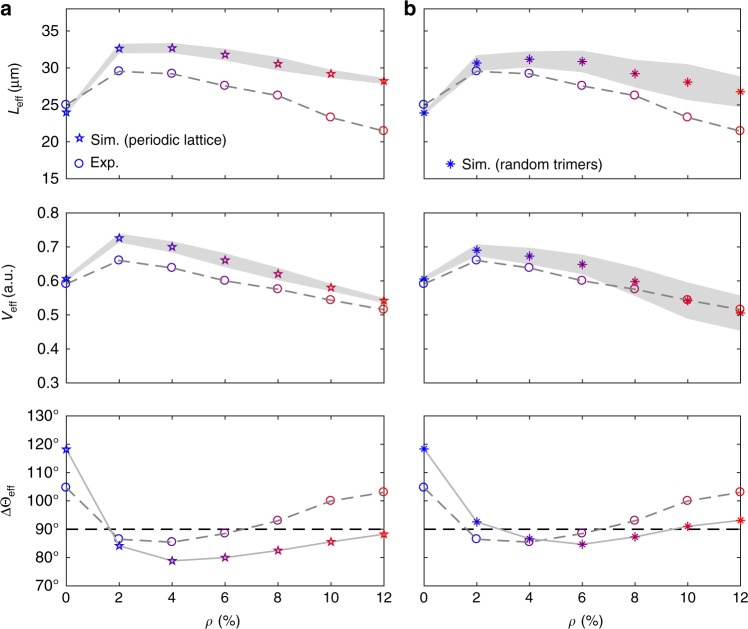Fig. 6.
Influence of obstacle distribution. a, b Simulated average effective propagation distance Leff, normalised average effective propagation speed Veff and average change in effective propagation direction ΔΘeff as a function of the obstacle density ρ for chiral active particles self-propelling through a circular area of radius R = 25 μm containing obstacles distributed according to a triangular periodic lattice (a) (Supplementary Fig. 5b and Methods) and a random distribution of non-overlapping trimers (b) (Supplementary Fig. 5c and Methods). The interactions with the obstacles include all three cell–obstacle interaction terms: repulsive interactions, forward-scattering events and tumble-collisions (Methods). Each value is obtained from averaging over 3000 different trajectories. The shaded area around the average values of Leff and Veff represents one standard deviation. The solid line connecting the values of ΔΘeff is a guide for the eyes. The corresponding probability distributions of the change in effective propagation direction Δθeff are shown in Supplementary Fig. 8. The corresponding experimental values (Figs. 1 and 2) are shown for reference (circles)

